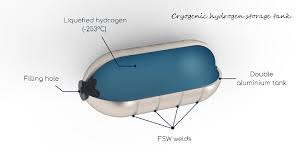High-Pressure Compression, Liquefaction and Metal Hydrides for Hydrogen Storage
DOI:
https://doi.org/10.63318/waujpasv3i2_08Keywords:
Hydrogen, Compression, Embrittlement, Liquefaction, Phase Inversion, Metal HydrideAbstract
Hydrogen storage involves the safe and efficient containment of hydrogen. Hydrogen storage is
highly essential due to hydrogen's potential as a clean, green energy source that can enhance the
utilization of energy derived from renewable resources. However, due to high flammability of
hydrogen, its storage possess some challenges regardless of the storage method employed. To
contribute to the existing literature and deepen the understanding of hydrogen storage methods,
this review paper briefly examines the use of high-pressure hydrogen compression, hydrogen
liquefaction and metal hydrides for hydrogen storage. The findings from the reviewed work
suggest that each process comes with its own set of advantages and disadvantages regarding
storage density, safety, energy requirements and more. Overall; however, the benefits outweigh the
drawbacks. Effective hydrogen storage is crucial for the utilization of hydrogen across various
applications, playing a crucial role in the decarbonization of associated sectors.
Downloads

Downloads
Published
Issue
Section
License

This work is licensed under a Creative Commons Attribution-NonCommercial 4.0 International License.
This journal uses Creative Commons Attribution-Noncommerical 4.0 International License (CC BY-NC 4.0), which permits use, sharing, adaptation, distribution and reproduction in any medium or format, as long as you give appropriate credit to the original author(s) and the source, provide a link to the Creative Commons license, and indicate if changes were made. To view a copy of this license, visit https://creativecommons.org/licenses/by-nc/4.0/.
Copyright of articles
Authors retain copyright of their articles published in this journal.




